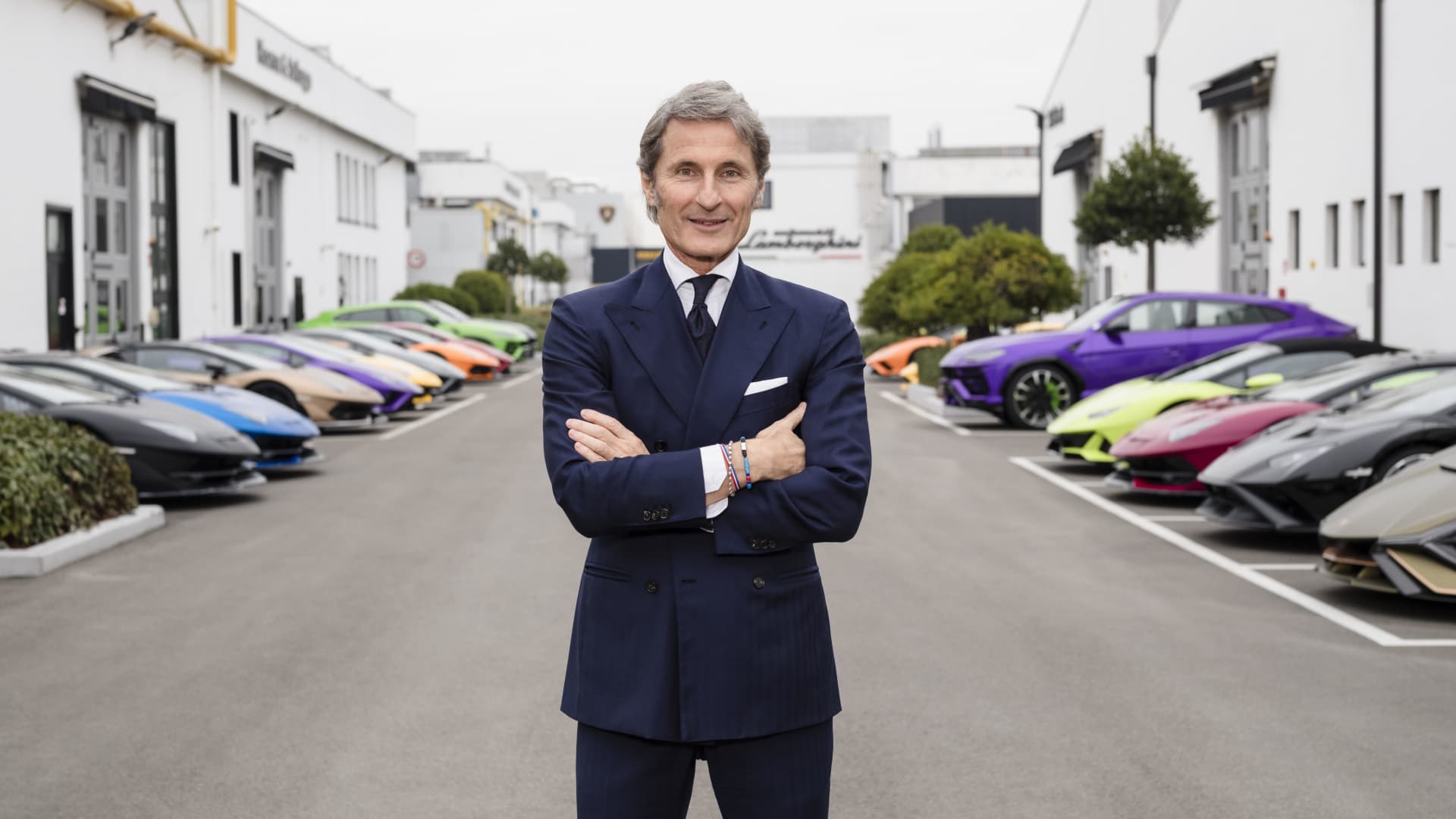Products You May Like
The wait time for a new Lamborghini SUV or super-car is now over 12 months, as demand from wealthy car lovers shows little sign of slowing, the automaker’s chief executive told CNBC on Wednesday.
Despite volatile stock markets and growing economic uncertainty, demand for Lamborghini’s is “as high as ever,” said Stephan Winkelmann, Lamborghini’s CEO.
“It’s incredible,” Winkelmann said. “It’s difficult to make a forecast of what is going to happen and for the rest of the year 2022. But speaking to customers, speaking to all our leaders, we don’t see any any slowdown in terms of orders.”
The result is a waiting list that is now over 12 months. Prepandemic, the typical waiting list for Lamborghinis was six to nine months. Asked when or if the company’s waiting list will ever return to “normal,” Winkelmann said demand for high-end cars may have fundamentally reset to a higher level given the sheer amount of wealth created in the past two years.
“What we see is that around the world there are more and more people able to buy a car like ours,” he said. “After the pandemic, people wanted to reward themselves. And we have the markets which were flooded with money. I think we are in a very high plateau. I don’t know if this is the new normal.”
In addition, Lamborghinis have become a favorite for the young rich, who made their newly minted fortunes from crypto, stocks, tech companies and inheritances. Winkelmann said 70% of Lambo customers will be under 40 in 2025.
“We have definitely seen a shift toward a much younger customer,” he said.
Lamborghini reported record profits and production last year driven largely by its SUV, the Urus. Sales increased 19% to $2.1 billion, and it delivered 8,405 cars, up 13% over 2020, including sales of 5,021 Urus models, 2,586 Huracans and 798 Aventadors.
Winkelmann said production this year has not been slowed by supply-chain issues, since the company gets high priority for chips and other parts from parent company Volkswagen. He said production this year is on track to be even higher than last year’s.
“We improved our production, so we believe we improved the output,” he said. “We will see. But this is an opportunity for sure.”
Because of the long wait times, some dealerships are charging customers five- and six-figure markups to get cars that are available sooner, either through other customer cancellations or demo models. One buyer told CNBC he paid $100,000 to get a Urus within a month, rather than wait.
Winkelmann said the company does its best to police pricing practices and prevent “phantom orders” from dealers. But with prices for many preowned Lambos now at 140% of the new sticker price, the profit temptation for dealers with cars available now remains strong.
“We don’t share this view of letting people pay over sticker,” he said. “When we talk to our partners, our dealers, we always are very clear about our position.”
